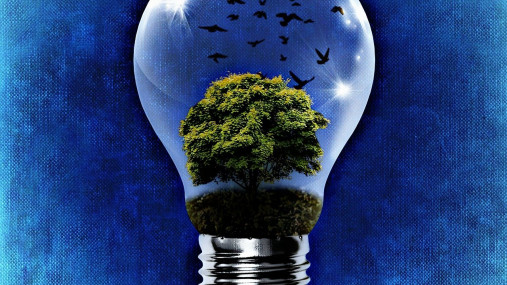
Press releases » Electricity Market Design: EU not there yet to ensure sustainable prices for Europe’s decarbonisation, cautions EUROFER
Electricity Market Design: EU not there yet to ensure sustainable prices for Europe’s decarbonisation, cautions EUROFER
Downloads and links
Recent updates

Brussels, 19 July 2023 – The reform of the EU Electricity Market Design continues to fall well short of delivering the urgent solutions needed to avoid further price spikes, whilst it overstates the potential of long-term solutions to redress the structural problems of the EU wholesale market. The benefits of renewables in the EU energy mix should be passed on to industrial consumers and citizens as quickly as possible. The revisions introduced in the report voted today by the Industry, Research and Energy (ITRE) Committee of the European Parliament improve some elements but do not address the root causes of high electricity prices, hindering decarbonisation efforts and undermining the competitiveness of European industry, says the European Steel Association.
“The text adopted by the ITRE Committee contains some steps forward to cope with emergency situations; however, we are still very far from what we need to effectively modernise the current system, which has shown all its limits in the current geopolitical context”, stressed Axel Eggert, Director General of the European Steel Association (EUROFER). “If we are serious about making the energy transition a success by switching to fossil-free electricity, we need a structural solution for short-term markets given their impact on long-term contracts”, he added.
The ITRE report introduces several improvements in dealing with new crises, such as clearer criteria to define emergency situations and the related possibility for member states to intervene in price setting for electro-intensive industrial consumers. In addition, the possibility for governments to partially reinvest revenues in the industrial transition within the framework of Contracts for Difference (CfDs), to couple CfDs funded projects with Power Purchase Agreements (PPAs) for targeted customers, and the renewed set of obligations for member states to remove barriers to access PPAs, are welcomed measures for the steel sector.
However, these instruments have a limited impact in bringing the electricity prices down to a sustainable level in the short-term. Structural solutions still need to be found to ensure internationally cost-competitive electricity prices in the short term, beyond complex state aid compensation schemes.
Today, the steel sector consumes around 75 TWh of electricity per year. According to EUROFER’s estimates, the transition to low-carbon technologies for green steelmaking based on hydrogen will massively boost electricity consumption to 165 TWh by 2030 and up to 400 TWh by 2050. Over €30 billion of investments to produce low-carbon steel, based on green technologies with fossil-free electricity at its heart, could be at risk in the EU if their operating costs are unsustainable due to non-competitive and hence unaffordable electricity prices in Europe.
“The energy crisis is not solved yet: the EU must find short and long-term solutions to allow both energy-intensive industries and consumers to reap the benefits of a decarbonised electricity system, starting with wholesale markets. We invite the European Parliament and the Council to hold an in-depth discussion and propose an impact assessment of alternative market designs to be carried out by the Commission shortly after the current reform”, concluded Mr. Eggert.
Contact
Lucia Sali, Spokesperson and Head of Communications, +32 2 738 79 35, (l.sali@eurofer.eu)
About the European Steel Association (EUROFER)
EUROFER AISBL is located in Brussels and was founded in 1976. It represents the entirety of steel production in the European Union. EUROFER members are steel companies and national steel federations throughout the EU. The major steel companies and national steel federation of Turkey and the United Kingdom are associate members.
The European Steel Association is recorded in the EU transparency register: 93038071152-83.
About the European steel industry
The European steel industry is a world leader in innovation and environmental sustainability. It has a turnover of around €130 billion and directly employs around 306,000 highly-skilled people, producing on average 152 million tonnes of steel per year. More than 500 steel production sites across 22 EU Member States provide direct and indirect employment to millions more European citizens. Closely integrated with Europe’s manufacturing and construction industries, steel is the backbone for development, growth and employment in Europe.
Steel is the most versatile industrial material in the world. The thousands of different grades and types of steel developed by the industry make the modern world possible. Steel is 100% recyclable and therefore is a fundamental part of the circular economy. As a basic engineering material, steel is also an essential factor in the development and deployment of innovative, CO2-mitigating technologies, improving resource efficiency and fostering sustainable development in Europe.

Brussels, 02 July 2025 – The 90% climate target proposed today by the European Commission demands an unprecedented transformation of EU society and industry in just 15 years. The European steel industry is already doing its part, but a viable business case for the transition is still lacking. To enable it, the EU needs to implement the Steel and Metals Action Plan much more decisively, delivering a highly effective trade protection against global overcapacity, access to internationally competitive low carbon energy and scrap, and a watertight CBAM, says the European Steel Association.
How global overcapacity is destroying European industries
European Steel in Figures 2025 is EUROFER's statistical handbook, laying out in an easy-to-use format the key statistics and data about the performance and footprint of one of Europe's most important strategic sectors